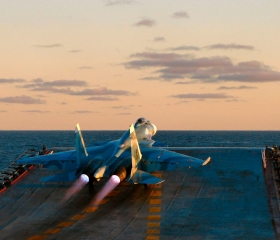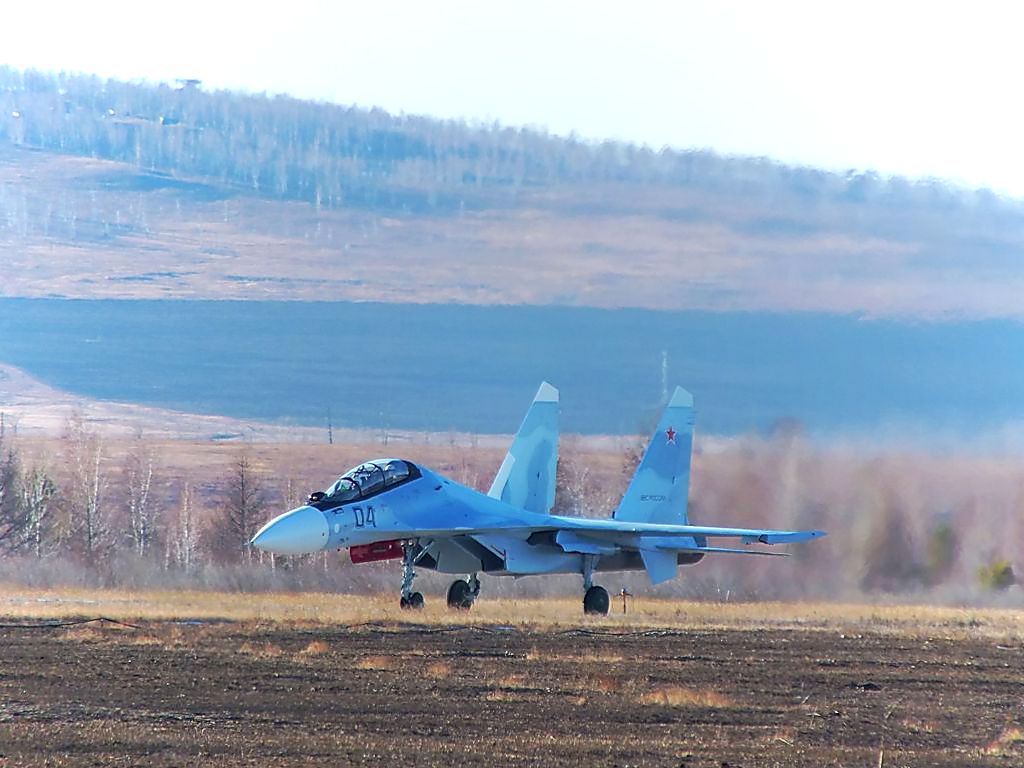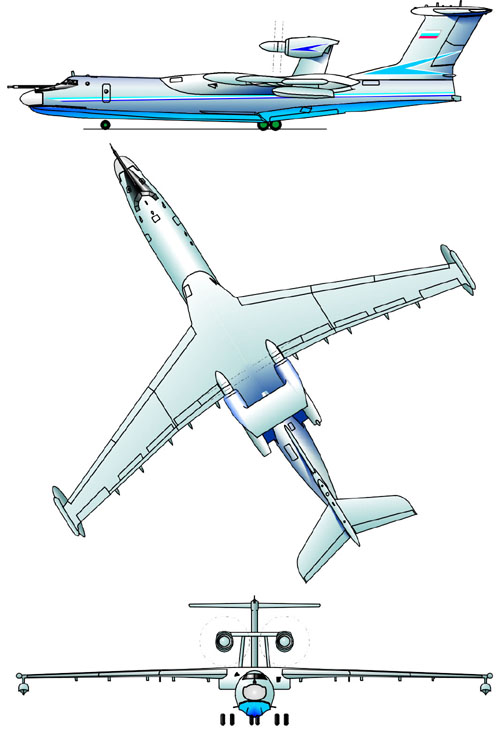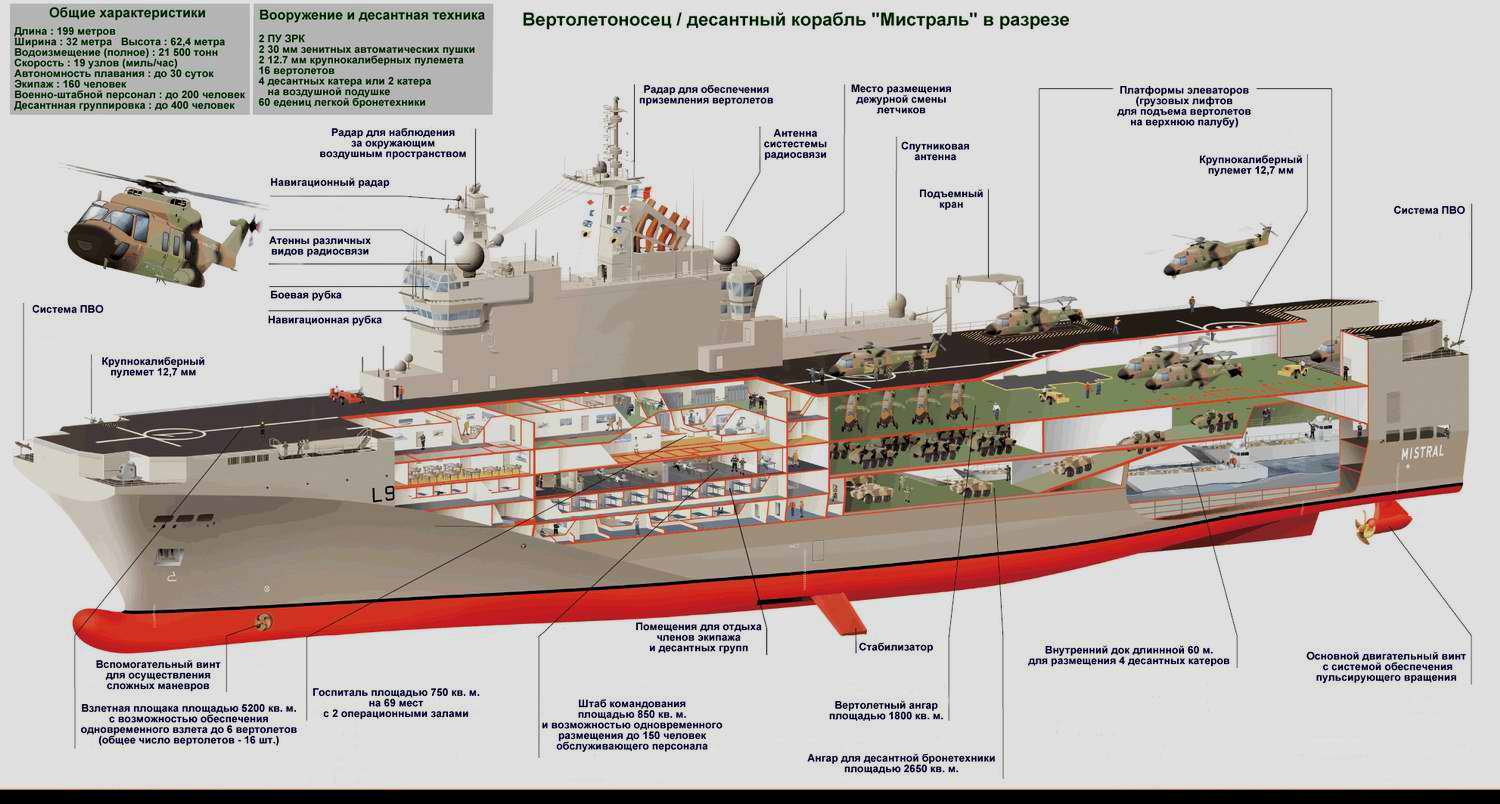Historically, the marine forces have always been politically more essential vis-à-vis other services, approaching in significance to strategic nuclear forces that have emerged only in the modern times. Hence, rearmament and reorganization of the navy is a concern for all major powers including Russia. As for naval aviation, a key navy component, its development may describe military plans of a state in much greater detail than any other process.
In the post-Soviet days, Russian naval aviation has gone through a most difficult period, when the formidable force of several hundred planes and helicopters of various types dwindled to few aircraft within separated units with a murky future. The revival is being launched virtually from the zero level, with a long way to go until the status is back to normal.
In 2011, the naval aviation of Russia was practically deprived of its strike capabilities, as its Tu-22M3 long-range strike bombers, MIG-31 and SU-27 fighters, SU-24 attack aircraft, and a part of transport airplanes were transferred under the command of the Air Force. The only exclusion was made to the SU-24s of the Black Sea Fleet, which remained with the Navy only because the Russia-Ukraine agreements allowed the Crimea basing just for the Russian Navy but not the Air Force aircraft.
Apart from the Black Sea SU-24 squadron, the naval aviation still possesses IL-38 and Tu-142 antisubmarine aircraft, Be-12 hydroplanes, SU-33 deck-based fighters, Su-33 attack aircraft, Ka-27 deck-based helicopters, as well as some transport planes and choppers.
The withdrawal has been aimed to simplify the command and upkeep of the relevant units and squadrons and prop up their regrettable condition caused by chronically low financing, with only less than ten out of several dozens Tu-22M3s combat ready.
The deck-based aviation was also lamentable. Admiral Kuznetsov, the only Russian aircraft carrier, and its air group of 15 Soviet-built SU-33s, several SU-25TG training aircraft and helicopters used to take to sea on rare occasions, while prospects for renovation of the carrier aviation were extremely vague. The overall situation prompted elimination of the naval aviation as a Navy service rather than its advance.
Carrier Aircraft: New Hope
Prospects for a major change began to dawn in 2011 with the contract on building the Mistral-class amphibious assault ships for the Russian Navy. Obtaining even two such vessels implies a meaningful upgrading of the helicopter fleet and construction of new aircraft. The key innovation has come from the Ka-52K deck-based assault helicopters for the onshore support of the marines and special operation forces. The helicopter is under testing now, with contract for its delivery to the Navy signed on February 8, 2014.
Renovation of the helicopter fleet, among other things through providing the Navy with upgraded Ka-27M antisubmarine helicopters fitted with digital equipment, is to be followed by modernization of the air wing for the only Russian aircraft carrier. Along with overhauled SU-33s that will remain at duty till mid or late 2020s, the Admiral Kuznetsov is to receive new MIG-29K carrier fighters. As a result, the air wing should incorporate 12 to 16 SU-33 and 24 MIG-29K fighters to significantly expand the carrier operation range, bringing it closer to the scheme specified back in the 1980s.
For a longer term, there are plans for a fifth-generation carrier fighter within the PAK KA program, i.e. perspective aircraft complex for naval aviation. The aircraft is meant as a marine version for the ground-based T-50 fifth-generation fighter that caught the air in 2010 and is being currently tested. The new carrier aircraft may be taken on in the first half of the 2020s to replace the SU-33 on the overhauled Admiral Kuznetsov and make the core of the wing for the new Russian carrier whose designing is now underway.
After the Crimea: Strike Power is Back
This year, Russia has to significantly adapt plans for development of its armed forces and the Navy to the new environment generated by the reunification with the Crimea at the southwestern border and in the world. Adjustments are in stall for naval aviation as well, for example it should regain the strike force. The plan was under discussion before the Crimea events, but these have expedited the process.
In the years to come, the Navy is to obtain SU-30SM multipurpose fighters for effective support of battleships in the naval theaters of the Black Sea, the Baltic Sea and the Sea of Japan, and also extend the air support range at oceanic theaters operating from the bases on the Kola Peninsula, Sakhalin and Kamchatka.
The delivery contract for 50 such fighters is expected to be signed for the Navy before the end of 2015, with a provision for augmenting the numbers. The SU-30SMs are also supplied to the Air Force, i.e. 60 aircraft under effective agreements.
Renovation is also planned for the antisubmarine aviation that is to be assigned many more missions. In most industrialized countries, the advance of airborne avionics has been converting antisubmarine aircraft into patrol airplanes, as exemplified by modernized P-3 Orion of the U.S. Navy, which matches Russian IL-38 both in age and type.
During the 30-year-long evolution, the Orions have been adapted to attack surface ships with air-to-ship missiles, perform early warning and control missions, and patrol the EEZ and territorial waters searching for smugglers and poachers.
Similar upgrading is underway for Russian antisubmarine airplanes, with the first IL-38N delivered to the Navy this July 15. At the same time, the 28 IL-38s to be refurbished are definitely too few for the entire spectrum of tasks posed to Russia by its world's longest marine border in combination with the steadily melting polar ice. Americans, for example, possess 130 aircraft of the type, while many U.S. experts insist that the number is insufficient.
Russia is hardly suited to compete with the United States in the naval aviation strength, but is obviously capable enough to significantly bolster its maritime air force through purchase of new aircraft.
Primarily, it goes about the A-42 hydroplane based on the A-40 Albatross designed in the 1980s and fit for rescue operations along with other marine patrol missions.
In 2008, the Russian Defense Ministry already announced plans to buy the A-42 – first acquire four such rescue-adapted aircraft by 2010, and then later proceed to the weaponized multipurpose version. However, the plans are still in the air. According to Lieutenant General Valery Uvarov, former Naval Air Force and Air Defense Commander, the Russian Navy would suffice with 15-20 new hydroplanes to fill the search-and-rescue needs and noticeably bolster the antisubmarine aviation fleet. Total replacement of the old aircraft by the A-42 is hardly likely, since the Taganrog Plant, the maker of the A-42 and the smaller Be-200 used by Ministry of Emergency Situations, is in poor condition and would fulfill a 40-aircraft order in about 20 years.
One more way to totally replace the outdated aircraft within acceptable time limits seems to lie in acquiring the Tu-214P, the airplane built on the basis of the Tu-204/214 passenger plane and approximately matching the state-of-the-art American P-8 Poseidon patrol aircraft based on the B-737 airliner.
These aircraft appear more feasible than the A-42 for mass production in the naval interests, as the scenario would bolster production of the Tu-204 that currently has practically no commercial demand. Manufacturing of 50 to 60 such airplanes within 10 years combined with a small batch of A-42s basically designed for rescue missions could mitigate the problem and lay the foundation for advancing the naval air capabilities. Finally, the air group short-range operations could be improved by ordering the patrol modification of the IL-114 efficiently suitable for patrolling isolated naval theaters, while the modernized IL-38Ns and Tu-214Ps (if ordered) could be used for oceanic operations.
***
An assessment of overall prospects for the Russian naval aviation suggests that it will remain tuned to support of the Navy in defense of the maritime borders. However, some attention is also given to projection of force, as modernization of the Admiral Kuznetsov air wing, the overhaul of the carrier and construction of two Mistral-class assault ships will provide the Navy with a capability for local operations away from its bases with full-fledged air support, while the subsequent progress should definitely hinge on Russia's economic prospects.









